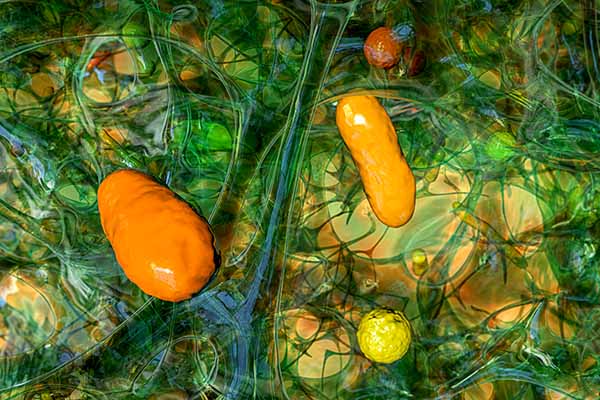What is Biofilm?
A biofilm is a hardened layer of germs and microorganisms stuck to a surface. Most people assume you can simply wipe up dirt off a surface and leave behind a clean environment but if a biofilm has formed, then extra scrubbing is needed.
Biofilms are actually found in all kinds of places – even in your own mouth! Over time, bacteria lands on a surface and starts multiplying. As other germs and microorganisms land nearby, this new living community forms a sticky, slimy substance to protect the community, bind it together, and keep it in place on whatever surface it is living on. Over time, these layers harden and can be difficult to remove. A biofilm especially likes forming in places with moisture nearby to sustain it.
Biofilms can be hard to clean
Without knowing what it was, you have already cleaned biofilms off from surfaces. Biofilms are the plaque on your teeth, that pink scum in your shower, sink, or toilet, the grime in your kitchen, and the slime on a slippery river rock. Over time, these layers of biofilm accumulate and are harder to clean the longer they are left to grow.
Regular weekly cleaning keeps biofilms around a home or business to a minimum. However, if a surface is not cleaned regularly, the biofilm layers harden, and greater effort must be expended to make sure the layers are removed and only a clean surface remains. A good example to illustrate this is the biofilm that forms on our teeth as plaque. The longer we wait between dental cleanings, the harder it is to remove plaque and the more damage it can do to the tooth surface underneath. The same is true for the damage that can occur to surfaces such as countertops and bathroom fixtures.
When cleaning a surface with a formed biofilm, you can’t simply wipe the area with a disinfectant. The sticky substance will protect the microorganisms underneath and the disinfectant will remain on top of the sticky substance. To truly clean the area, you have to scrub at the biofilm first to make sure it is fully removed then disinfect the area according to instructions on the bottle.
Difference between biohazard biofilm and regular dirt
Most biofilms that form on household surfaces are easy enough to clean for anyone with basic cleaning skills performing regular maintenance. While you don’t want them to stay around, they are relatively harmless to remove. With a strong cleaner, vigorous scrubbing, followed by a quality disinfectant applied correctly, biofilms can be kept from doing any lasting damage and will be easy to deal with.
In situations involving biohazards, however, our professional biohazard cleaners are there to take over for you. Even those with excellent cleaning skills should not attempt to handle any biohazardous substances such as blood, body fluids, or harmful chemicals. The bacteria and viruses making up the biofilm can be extremely dangerous without the proper protection and cleaning equipment. A surface that seems to be safe can have a large community of living organisms still hardened on a surface despite disinfection that are ready to infect the unsuspecting.
At Bio SoCal, we’ll make sure all biofilms have been removed and your property restored to safety by using the proper safety equipment and industrial cleaners. First, we sanitize the surface to protect ourselves before we scrub away the biofilm, then disinfect all surfaces.
Don’t risk cleaning up biofilms infected with biohazards on your own – rely on professionals who know how to do the job right and keep you safe.

